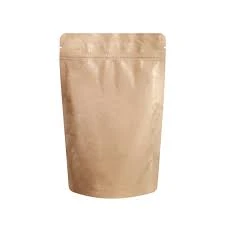- Afrikaans
- Albanian
- Amharic
- Arabic
- Armenian
- Azerbaijani
- Basque
- Belarusian
- Bengali
- Bosnian
- Bulgarian
- Catalan
- Cebuano
- chinese_simplified
- chinese_traditional
- Corsican
- Croatian
- Czech
- Danish
- Dutch
- English
- Esperanto
- Estonian
- Finnish
- French
- Frisian
- Galician
- Georgian
- German
- Greek
- Gujarati
- haitian_creole
- hausa
- hawaiian
- Hebrew
- Hindi
- Miao
- Hungarian
- Icelandic
- igbo
- Indonesian
- irish
- Italian
- Japanese
- Javanese
- Kannada
- kazakh
- Khmer
- Rwandese
- Korean
- Kurdish
- Kyrgyz
- Lao
- Latin
- Latvian
- Lithuanian
- Luxembourgish
- Macedonian
- Malgashi
- Malay
- Malayalam
- Maltese
- Maori
- Marathi
- Mongolian
- Myanmar
- Nepali
- Norwegian
- Norwegian
- Occitan
- Pashto
- Persian
- Polish
- Portuguese
- Punjabi
- Romanian
- Russian
- Samoan
- scottish-gaelic
- Serbian
- Sesotho
- Shona
- Sindhi
- Sinhala
- Slovak
- Slovenian
- Somali
- Spanish
- Sundanese
- Swahili
- Swedish
- Tagalog
- Tajik
- Tamil
- Tatar
- Telugu
- Thai
- Turkish
- Turkmen
- Ukrainian
- Urdu
- Uighur
- Uzbek
- Vietnamese
- Welsh
- Bantu
- Yiddish
- Yoruba
- Zulu
Comparable for mm Gauge Size Chart in 15 Words or Less
Understanding MM to Gauge Size Chart A Comprehensive Overview
When it comes to wire, sheet metal, and other materials, the measurement system can often be confusing. One of the most common conversions that professionals and DIY enthusiasts encounter is from millimeters (mm) to gauge sizes. This article will provide an in-depth exploration of the mm to gauge size chart, shedding light on its significance, common applications, and how to correctly interpret it.
What is Gauge Size?
Gauge size is a measurement system used primarily in the United States to denote the thickness of materials such as wire and sheet metal. Unlike millimeters, which provide a direct measurement, gauge sizes are inverse to the thickness; as the gauge number increases, the thickness decreases. This means that a 12-gauge wire is thicker than a 20-gauge wire.
The gauge system originated from the need to standardize wire sizes based on the number of draws or pulls through a die. As the wire is drawn thinner, the number of pulls increases, leading to a higher gauge number. This conversion can vary depending on the specific type of metal being measured, but the chart generally provides a useful guideline for gauge conversions across different materials.
Importance of the MM to Gauge Size Chart
The mm to gauge size chart serves multiple needs in various industries
1. Manufacturing and Engineering Engineers require precise measurements to design products. When working with materials, a gauge size chart helps them select the appropriate thickness for durability and performance.
2. Electrical Work In electrical applications, such as wiring, the gauge affects the current-carrying capacity. Thicker wires can conduct more electricity, making it crucial to consult the gauge size chart to ensure safety and functionality.
3. Craft and Hobby Projects For crafters and DIY enthusiasts, a clear understanding of gauge sizes is essential when selecting materials for projects, be it jewelry making or home improvement tasks.
4. Standardization Using a common reference point like the mm to gauge size chart helps standardize materials across different regions and cultures, enhancing communication and efficiency in global trade.
Interpreting the MM to Gauge Size Chart
mm gauge size chart

To use the mm to gauge size chart effectively, one should familiarize themselves with the basic conversion principles. The following are common conversions
- 0.5 mm = 36 gauge - 0.6 mm = 34 gauge - 0.8 mm = 32 gauge - 1.0 mm = 30 gauge - 1.2 mm = 28 gauge - 1.6 mm = 26 gauge - 2.0 mm = 24 gauge - 2.5 mm = 22 gauge - 3.0 mm = 20 gauge
As the numbers indicate, as you progress to a higher gauge number, the thickness in mm decreases. This inverse relationship is crucial for anyone using the chart to select the right material thickness for their needs.
Applications Across Different Industries
The mm to gauge size chart finds applications in various fields
- Construction Used extensively in building projects for framing, roofing, and other structural components where metal gauge directly affects strength and weight.
- Automotive Engineers often depend on gauge sizes when designing components that require specific durability and flexibility.
- Electronics The chart is vital for choosing wire gauges, as the right gauge can prevent overheating and ensure optimal performance of electronic devices.
- Jewelry Making Jewelers rely on gauge sizes to determine wire thickness, impacting the final design and wearability of the piece.
Conclusion
In conclusion, the mm to gauge size chart is an essential tool for various industries and applications, providing clarity and standardization in material thickness measurement. Whether you are an engineer, electrician, or DIY enthusiast, understanding how to navigate this chart can significantly impact the success of your projects. By comprehending the relationship between millimeters and gauge sizes, one can make informed decisions that enhance safety, functionality, and aesthetics in their work. Always refer to the latest mm to gauge size chart for the most accurate conversions and ensure a successful outcome in your projects.













